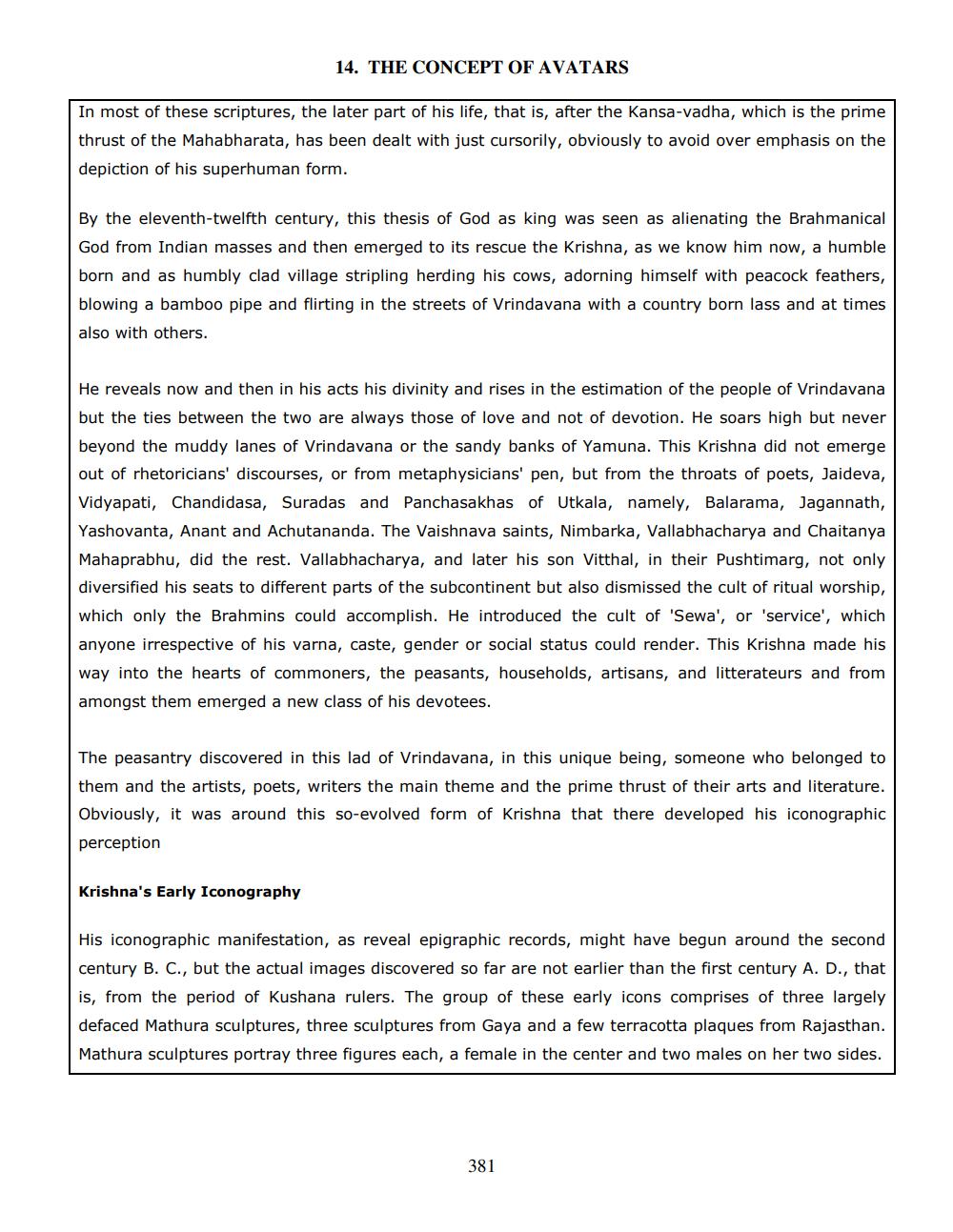________________
14. THE CONCEPT OF AVATARS
In most of these scriptures, the later part of his life, that is, after the Kansa-vadha, which is the prime thrust of the Mahabharata, has been dealt with just cursorily, obviously to avoid over emphasis on the depiction of his superhuman form.
By the eleventh-twelfth century, this thesis of God as king was seen as alienating the Brahmanical God from Indian masses and then emerged to its rescue the Krishna, as we know him now, a humble born and as humbly clad village stripling herding his cows, adorning himself with peacock feathers, blowing a bamboo pipe and flirting in the streets of Vrindavana with a country born lass and at times also with others.
He reveals now and then in his acts his divinity and rises in the estimation of the people of Vrindavana but the ties between the two are always those of love and not of devotion. He soars high but never beyond the muddy lanes of Vrindavana or the sandy banks of Yamuna. This Krishna did not emerge out of rhetoricians' discourses, or from metaphysicians' pen, but from the throats of poets, Jaideva, Vidyapati, Chandidasa, Suradas and Panchasakhas of Utkala, namely, Balarama, Jagannath, Yashovanta, Anant and Achutananda. The Vaishnava saints, Nimbarka, Vallabhacharya and Chaitanya Mahaprabhu, did the rest. Vallabhacharya, and later his son Vitthal, in their Pushtimarg, not only diversified his seats to different parts of the subcontinent but also dismissed the cult of ritual worship, which only the Brahmins could accomplish. He introduced the cult of 'Sewa', or 'service', which anyone irrespective of his varna, caste, gender or social status could render. This Krishna made his way into the hearts of commoners, the peasants, households, artisans, and litterateurs and from amongst them emerged a new class of his devotees.
The peasantry discovered in this lad of Vrindavana, in this unique being, someone who belonged to them and the artists, poets, writers the main theme and the prime thrust of their arts and literature. Obviously, it was around this so-evolved form of Krishna that there developed his iconographic perception
Krishna's Early Iconography
His iconographic manifestation, as reveal epigraphic records, might have begun around the second century B. C., but the actual images discovered so far are not earlier than the first century A. D., that is, from the period of Kushana rulers. The group of these early icons comprises of three largely defaced Mathura sculptures, three sculptures from Gaya and a few terracotta plaques from Rajasthan. Mathura sculptures portray three figures each, a female in the center and two males on her two sides.
381




